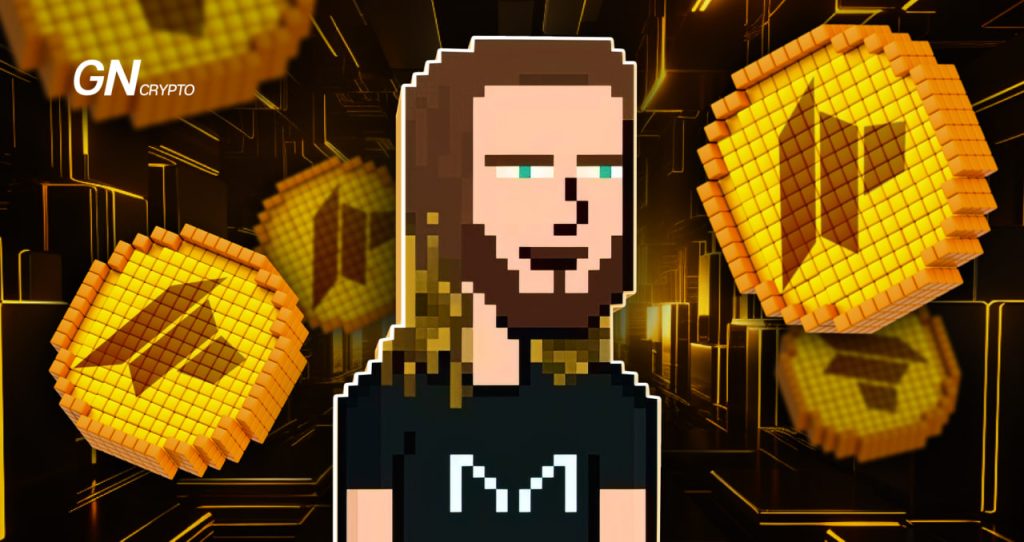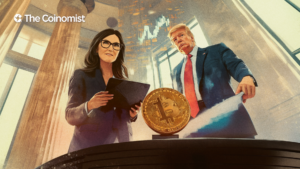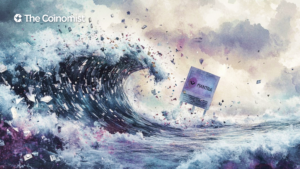“Stablecoins Way Better than Digital Fiat”: MakerDAO Interview

The Coinomist had a pleasure talking to Tadeo, Developer Relations for Spark Protocol, MakerDAO’s SubDAO. And the conversation wasn’t just about the Dai stablecoin or its advantages compared to its competitors, USDT included. We delved into which countries are better at regulating crypto, why people trust opaque businesses, recent research into Solana as a potential future codebase for MakerDAO.
On this page
GN: My first question is, how are things with MakerDAO?
Tadeo: Actually, really well. We are embarking on our major reorganization called Endgame. I'm part of Phoenix Labs, which is one of what we call the “nested” teams in one of the SubDAOs. Here’s some context: for the last two years, MakerDAO has been a fully decentralized organization. During those two years, we faced many challenges to scale. At some point, it wasn’t possible to onboard more people or projects just because of how we were set up.
So our new approach should allow us to scale, but at the same time not end up centralizing the organization.
GN: What exactly do you do at the company?
Tadeo: I do developer relations. I mainly deal with developers, and partners, how they can use our technology, and how they can integrate with us.
GN: And what’s the most exciting thing about your ecosystem? Your ultimate edge?
Tadeo: It’s the Dai stablecoin, the biggest and most decentralized stablecoin out there. Though Defi has been around for a while now, this new iteration is very impressive.
A lot of new stablecoins have come out in the past few months. And they’re all very focused on how they create the supply for that stablecoin. But I think everyone forgets the most important thing which is the demand. So why do people want to use stablecoin? What's the utility, what's the benefit that they get? And that's what Dai is doing, solving their needs. That is our biggest advantage. At Phoenix Labs, we’re building products around DAI to increase its utility.
“I don't think there's anyone in the world who would prefer digital fiat over stablecoins”
GN: Why do you think people are enticed by stablecoins?
Tadeo: I think it’s because they’re better than, for example, digital fiat currencies. Today, my payment got rejected while I was trying to wire money to American bank accounts. You have to deal with correspondent banks and your own bank doesn't help you out. On top of that, it takes around three days to make cross-border payments.
In contrast, I just take my digital wallet and literally make a payment on the spot. It takes a couple of minutes. Stablecoin is already a better product than traditional finance. I don't think there's anyone in the world who would prefer digital fiat over stablecoins.
GN: You don't think?
Tadeo: Let’s take out the regulatory uncertainty and the bad name that companies like FTX and other people have put on the industry. If it's really just about the technology, I think it's a way better product.
GN: You touched upon regulatory troubles so let me ask you this: the US Securities and Exchange Commission is trying to crack down on the industry. What's your take on the regulatory troubles in the US? Are you affected by them? If so, how?
Tadeo: Not so affected by it, but obviously, everyone loves to interact with the American users. It’s a huge market and Americans are usually very receptive to new technologies, which makes it again, a great user base. But we have to ignore them altogether – which is kind of a shame.
Ultimately, it is a competition between government agencies, trying to see who can get the mandate to regulate crypto in the future. And that comes with a lot of power and a lot of money for them.
I see our American counterparts pushing for a fairer regulation. I feel that they might be encountering very hostile government agencies because it's not really to their benefit to help the industry at the moment. Again, we have worldwide competition, and we're going to see regulatory competition happening too.
We have countries that already have been regulating crypto in a really healthy way. So users, companies, and people are going to be benefiting from that. While the companies will move to other places and contribute to their economy.
GN: You touched upon countries that are regulating crypto better, can you name them?
Tadeo: For example, Portugal. I think around three years ago, they kind of said we don’t understand crypto, therefore, we're not going to impose any sort of regulations. Then, I think, last year they came up with crypto regulations that make a lot of sense. They basically treat crypto as if it were a fiat. So if you get paid in crypto, you pay taxes on it. You can own a wallet legally, which is also a very important aspect to merge both worlds. Also, it’s making it clear that it’s not a free ride or a tax haven. It gives people the certainty that they need to live and not necessarily have to have a bank account, they can have access to alternative financial systems.
GN: Where are most of your customers based?
Tadeo: I don't think we have good data on this, mainly because we don't do any user tracking. In general, it's very difficult to be able to pinpoint users location-wise. I am from Argentina, and I see a lot of adoption of Dai and other stablecoins there because it solves a very pertinent problem for them. So I think countries that have bad financial infrastructure are already massive users of stablecoins.
GN: I remember that there was inflation in Argentina. Is it still a thing?
Tadeo: Unfortunately, we have hyperinflation. I think the last number I saw was 12% inflation in one month. The use case is obvious. In a way, people in more stable countries will only see the benefit of stablecoins once they have an issue with their financial system.
“We don't do an audit every time we buy a new phone or gadget”
GN: I want to talk a little bit about your partnership with Solana. Why do you think Solana is ultimately better than Ethereum for the new chain?
Tadeo: Ok, so this comes from a post by one of MakerDAO’s co-founders, Rune Christensen. This is something that I think the wider population still doesn’t understand well or at least doesn't feel comfortable with this idea of building in public. We do everything on the forum. All of our major discussions are open. So, I can't speak for Rune. But from my perspective, this is him kick-starting a research project. I think the objectives are clear.
But also this is not going to happen for quite a few years from now. So once it does, it could look totally different. Take the SubDAOs or this new reorganization model that we're putting in place this year that should be fully launched by next year, like Q1 or Q2. This was designed a year ago, and those designs were nothing like today's reality.
GN: But we've heard rumors that Buterin sold his stake that day.
Tadeo: Me too. I can't confirm. But again, when you're building in public, you're also signaling things in public. I don't know Vitalik personally, but I also don't think he's the kind of guy who wouldn’t want to hear opinions from other ecosystems or other technical people. So it might be just a lucky coincidence.
GN: We'll find out soon enough, I guess. You were talking a little bit about blockchain projects and scalability. Where are we at in terms of blockchain development? What's your take?
Tadeo: Very early. I think there's an explosion of diverse work when it comes to scaling, which is super interesting. So I really love what the zero-knowledge proof base chains are doing. It's very difficult work. I think a problem that we have with blockchains, in general, is that in order for them to be fully trusted, they have to be fully open. There are a lot of use cases that don't work with fully open blockchains. So zero knowledge applied in certain scenarios actually can build really reliable systems that are scalable, which I think is the most important thing.
GN: Let’s once again talk about the Dai stablecoin. You touched upon it a little bit earlier, but how does it really compare to other stablecoins? Say, USDT. Why would someone opt for your stablecoin and not USDT, for example?
Tadeo: That's a good point. So I'd say in an ideal world, a user of any product really knows everything about that product. The reality is very different. We don't do an audit every time we buy a new phone or gadget. I hope that people opt for Dai because they trust it more and because it’s always worth what it’s supposed to be worth.
Meanwhile, USDT has issues with transparency as they never had fully audited financials. Everyone's just sort of trusting a financially opaque institution with potentially their life savings. As a person who got burned once as a kid from Argentina during the 2001 crisis, I put value in something that I can see is fully auditable and transparent.
Again, I think we're going to appreciate this whenever issues come up with Tether and this recurrent Tether FUD. The future shouldn't be this way. We shouldn't have stablecoins that are in the billions de-pegging for no good reason. So I think in a couple of years when Tether still de-peggs, it's just not going to be a useful currency.
GN: The number of scandals pertaining to Tether is indeed, quite, ‘impressive’. Still, it’s a major stablecoin in terms of the market share, right? So, let's speculate a little bit here in terms of why people trust institutions that are, as you noted, opaque.
Tadeo: I think it's just simply the risks are underappreciated because they've never experienced it. That's, I think, the main part. The second one has to do with Dai’s mechanism. It's always been very difficult to increase the supply of Dai because we always wanted to do it in the most secure and sustainable way. That means that you can just simply land against any sort of, let's say, low-quality assets.
My hope is that with this new change of SubDAOs and having different SubDAOs deciding capital allocation, essentially increasing the supply of Dai in a distributed manner, we are able to meet the demand that it has. I think that's when we can scale. Again, from a user perspective, minting Dai is much more difficult than minting USDT or USDC. So we need to be able to find a process or a way for people to have that experience equal to or even better than Tether. I think that's when we should see a flipping.
GN: Which challenges would you outline at the moment with regard to maintaining the stability of the stablecoin?
Tadeo: There's quite a few, the biggest issue really is that the mechanism by which Dai has grown has been loans, which in Defi have mostly been to serve traders leveraging up on their positions. So having that single use case for the production of the supply of Dai is quite limited, as Dai is a stablecoin that everyone can use and has multiple use cases, it is not just for traders.
So going into this model essentially what SubDAOs will be doing from now on is they'll prioritize Dai and then they'll find the opportunities, by which they can supply Dai and basically get good and sustainable collateral. That should hopefully solve that scaling challenge because no matter how much you and I would want to have Dai and want to be able to pay our bills in Dai, it was always limited by the available supply. So for me, I think that's the biggest hurdle. I think the second stage, and it’s not just about limiting Dai but other stablecoins, including USDC and USDT, is what’s the utility of stablecoins outside of crypto?
Again, stablecoins are a much better product than digital fiat and you can settle payments way faster. Even on Ethereum with its gas fees, you can still do it cheaper than on most major networks. So, if established companies can actually use stablecoins for that matter and the integration is easy enough, I think they will import them. Then you have this moment where you have both supply and demand meeting, and I think that's when we'll see actual stablecoins go to the international volumes that they really should be at.
“CBDCs are going to be a reality in a couple of years coming from several countries”
GN: You previously talked about fiat but, as you know, certain countries that are mulling over the launch of CBDCs. Do you fear this competition?
Tadeo: Not right now as there’s so much open playing field. I think the pie is growing larger overall than any share of the pie that your competitors might take.
I think CBDCs are going to be a reality in a couple of years coming from several countries. And I think they will meet different use cases. I believe we will have transnational currencies and national currencies. You'll simply have a greater variety of them.
GN: Finally, I would like to ask you about decentralized autonomous organizations and how essential are they, in your opinion, when it comes to ensuring financial democracy online?
Tadeo: Fundamental, and not just in finance but in every realm. There are a lot of things that are largely mediated nowadays by either governments or companies or private companies. Really, I think that's the extent of it. And I think there's a lot of things that are better mediated by DAOs, rather than either one of those other institutions. For example, public goods.
So Maker and Spark are public goods. It's public infrastructure that anyone can run. For them to be able to run those, you need to have decentralized organizations behind them that you build and maintain. Particularly, with finance, we've all seen and had moments in our lives where we mostly don't care about financial issues, like the lack of transparency on how banking works and so on. But we’ve all experienced at least once when we had our debit card bank blocked for some reason. In such cases, you feel helpless because you have no alternative. All your money is in that place and you’re not able to control its movement. I think in ten years, a majority of us, or at least the financially healthiest among us, will have a mediation between these two systems. So, you’ll still have private bank accounts and credit cards. But you’ll also have funds in a wallet that you move for certain things. In other words, using financial products on Ethereum and banks depending on what you need.
The interview has been condensed and edited for clarity.
The content on The Coinomist is for informational purposes only and should not be interpreted as financial advice. While we strive to provide accurate and up-to-date information, we do not guarantee the accuracy, completeness, or reliability of any content. Neither we accept liability for any errors or omissions in the information provided or for any financial losses incurred as a result of relying on this information. Actions based on this content are at your own risk. Always do your own research and consult a professional. See our Terms, Privacy Policy, and Disclaimers for more details.



























